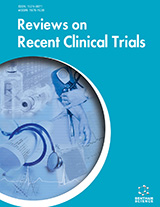Abstract
Receptor tyrosine kinases are a group of molecules that can enhance cellular proliferation, cell motility and migration, and eventual metastasis. c-Met receptor tyrosine kinase has a significant biological and biochemical effect on cancer cells, and appears to be an important therapeutic target. In many cancers, c-Met (which can be activated by its ligand hepatocyte growth factor, HGF) can be overexpressed, activated, amplified, and/or mutated. The mutations of c-Met had initially been described in the tyrosine kinase domain, and we have described them in other “hot-spots” such as the juxtamembrane and semaphorin domains. Targeting c-Met has been very fruitful pre-clinically, and currently, there are several clinical trials for advanced cancers. Described in this review are some of the biological and biochemical aspects of c-Met, and detailed are a number of therapeutic strategies. With our understanding of c-Met biology and role in cancer, we should be able to arrive at a unique strategy to eradicate cancers in which c-Met plays a significant role.
Keywords: Hepatocyte growth factor, c-Met receptor tyrosine kinase, RTK catalytic activity, mTOR pathway, XL184
Reviews on Recent Clinical Trials
Title: Review of Clinic Trials: Agents Targeting c-Met
Volume: 2 Issue: 2
Author(s): Oyewale Abidoye, Nadh Murukurthy and Ravi Salgia
Affiliation:
Keywords: Hepatocyte growth factor, c-Met receptor tyrosine kinase, RTK catalytic activity, mTOR pathway, XL184
Abstract: Receptor tyrosine kinases are a group of molecules that can enhance cellular proliferation, cell motility and migration, and eventual metastasis. c-Met receptor tyrosine kinase has a significant biological and biochemical effect on cancer cells, and appears to be an important therapeutic target. In many cancers, c-Met (which can be activated by its ligand hepatocyte growth factor, HGF) can be overexpressed, activated, amplified, and/or mutated. The mutations of c-Met had initially been described in the tyrosine kinase domain, and we have described them in other “hot-spots” such as the juxtamembrane and semaphorin domains. Targeting c-Met has been very fruitful pre-clinically, and currently, there are several clinical trials for advanced cancers. Described in this review are some of the biological and biochemical aspects of c-Met, and detailed are a number of therapeutic strategies. With our understanding of c-Met biology and role in cancer, we should be able to arrive at a unique strategy to eradicate cancers in which c-Met plays a significant role.
Export Options
About this article
Cite this article as:
Abidoye Oyewale, Murukurthy Nadh and Salgia Ravi, Review of Clinic Trials: Agents Targeting c-Met, Reviews on Recent Clinical Trials 2007; 2 (2) . https://dx.doi.org/10.2174/157488707780599357
| DOI https://dx.doi.org/10.2174/157488707780599357 |
Print ISSN 1574-8871 |
| Publisher Name Bentham Science Publisher |
Online ISSN 1876-1038 |
 6
6
- Author Guidelines
- Bentham Author Support Services (BASS)
- Graphical Abstracts
- Fabricating and Stating False Information
- Research Misconduct
- Post Publication Discussions and Corrections
- Publishing Ethics and Rectitude
- Increase Visibility of Your Article
- Archiving Policies
- Peer Review Workflow
- Order Your Article Before Print
- Promote Your Article
- Manuscript Transfer Facility
- Editorial Policies
- Allegations from Whistleblowers
Related Articles
-
Amyloid-Beta Peptide 1-42 Causes Microtubule Deregulation through N-methyl-D-aspartate Receptors in Mature Hippocampal Cultures
Current Alzheimer Research In Vivo Bio-imaging Using Chlorotoxin-based Conjugates
Current Pharmaceutical Design The Metastatic Process: Methodological Advances and Pharmacological Challenges
Current Medicinal Chemistry Targeting MDM4 as a Novel Therapeutic Approach for Hematologic Malignancies
Current Cancer Drug Targets The Potential Targets and Mechanisms of a Carbazole and Pyrazole Containing Anticancer Compound
Current Cancer Drug Targets Targeting Ovarian Cancer-Initiating Cells
Anti-Cancer Agents in Medicinal Chemistry Current View on the Mechanism of Action of Perifosine in Cancer
Anti-Cancer Agents in Medicinal Chemistry Design and Efficient Synthesis of Novel 4,5-Dimethylthiazole-Hydrazone Derivatives and their Anticancer Activity
Letters in Drug Design & Discovery Drug Combinations Enhancing the Antineoplastic Effects of Erlotinib in High-Grade Glioma
Recent Patents on Anti-Cancer Drug Discovery Modulation of Poly(A)-specific Ribonuclease (PARN): Current Knowledge and Perspectives
Current Medicinal Chemistry Human Sirtuins: An Overview of an Emerging Drug Target in Age-Related Diseases and Cancer
Current Drug Targets Evidence for Complex Binding Profiles and Species Differences at the Translocator Protein (TSPO) (18 kDa)
Current Molecular Medicine Nanoparticle Coated Viral Vectors for Gene Therapy
Current Biotechnology Novel Patents and Cancer Therapies for Transforming Growth Factor- Beta and Urokinase Type Plasminogen Activator: Potential Use of Their Interplay in Tumorigenesis
Recent Patents on Anti-Cancer Drug Discovery Chemical Variability and Antioxidant Activities of the Essential Oils of the Aerial Parts of Ammoides verticillata and the Roots of Carthamus caeruleus and their Synergistic Effect in Combination
Combinatorial Chemistry & High Throughput Screening Evaluation of Biological Effects and Toxicity of Cetyltrimethylammonium Bromide Stabilized Silver Nanoparticles and Cetyltrimethylammonium Bromide Alone Following Intravenous Injection in Mice
Current Nanomedicine The Expanding Universe of Neurotrophic Factors: Therapeutic Potential in Aging and Age-Associated Disorders
Current Pharmaceutical Design In Vivo Applied Positively Charged FITC-Labeled Peptide Conjugates Show Artificial Relocation in Frozen Sections
Letters in Drug Design & Discovery Genes that Modulate the Sensitivity for Anti-Microtubule Drug-Mediated Chemotherapy
Current Cancer Drug Targets CDC25A: A Rebel Within the CDC25 Phosphatases Family?
Anti-Cancer Agents in Medicinal Chemistry


























